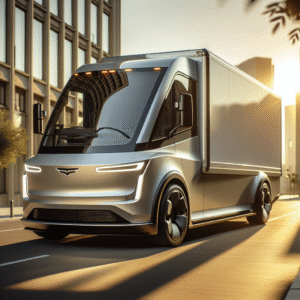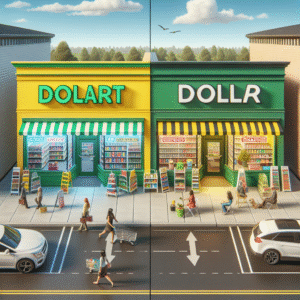Trump’s Auto Tariff Relief “Helps Tesla a Lot” — Leaving Other Carmakers Behind
The automotive industry has always been at the forefront of economic discussions, especially when it comes to tariffs and trade policies. Recently, the announcement of tariff relief for electric vehicles offered by the Trump administration has stirred up conversation about its implications for various automakers. While the relief measures have been lauded for benefiting Tesla, they have left other car manufacturers grappling with competitive disadvantages. This article delves into the nuances of the tariff relief, its impact on Tesla, and the broader implications for the automotive landscape.
Understanding the Tariff Relief
In an effort to promote electric vehicle (EV) production and adoption, the Trump administration introduced tariff relief that primarily benefits companies like Tesla. This move is part of a broader strategy to bolster the U.S. EV market and reduce dependence on foreign oil. However, the implications of this policy are complex.
What is Tariff Relief?
Tariff relief essentially refers to the reduction or elimination of taxes imposed on imported goods. For the automotive sector, this means that certain electric vehicle components and materials can be imported without incurring high tariffs, subsequently lowering the overall production cost for manufacturers. In this context, the relief is focused on products used to manufacture electric vehicles.
Specific Benefits to Tesla
Tesla, being a prominent player in the electric vehicle market, stands to gain significantly from these tariff reductions. Here are some specific benefits:
– Lower Production Costs: With the reduction in tariffs, Tesla can import parts at a reduced cost, enabling them to maintain or even lower their vehicle prices.
– Increased Profit Margins: The cost savings from tariff relief can enhance the profit margins for Tesla, allowing for reinvestment into research and development.
– Market Expansion: With lower costs, Tesla is better positioned to expand its market reach, competing more effectively against both domestic and international automakers.
The Impact on Other Carmakers
While Tesla is reaping the benefits of the tariff relief, other car manufacturers may find themselves at a disadvantage. Traditional automotive companies such as Ford, General Motors, and Chrysler may not enjoy the same level of tariff relief, leading to a variety of challenges.
Challenges Faced by Other Automakers
– Higher Production Costs: Without similar tariff reductions, other carmakers may face increased production costs, making it difficult to compete with Tesla’s pricing.
– Slower Transition to EVs: Traditional automakers have been criticized for lagging in the transition to electric vehicles. The added financial strain from tariffs may slow down their EV development efforts.
– Market Share Loss: As Tesla continues to capitalize on lower costs, other manufacturers risk losing market share in the rapidly growing EV segment.
Strategic Responses from Competitors
In light of the tariff relief benefiting Tesla, other automakers are exploring various strategies to balance the competitive landscape. Here are some common responses:
Investing in Electric Vehicle Development
Many traditional car manufacturers are increasing their investments in EV technology. This includes:
– Developing new electric models to compete directly with Tesla.
– Innovating battery technologies to improve performance and reduce costs.
– Forming partnerships with tech companies to enhance autonomous driving capabilities.
Lobbying for Tariff Adjustments
Some automakers are actively lobbying the government for more favorable tariff conditions. They argue that equal treatment in tariff policies will foster fair competition and help them to better transition to electric vehicles.
The Future of the Automotive Industry
As the automotive industry continues to evolve, the implications of tariff policies will play a significant role in shaping the future landscape. The growing emphasis on electric vehicles and sustainable practices will likely influence future regulations and tariff structures.
Potential Developments to Watch
– Increased Government Support for EVs: As the government pushes for greener alternatives, we may see further support in the form of subsidies or incentives for both manufacturers and consumers.
– Technological Innovations: Continued advancements in battery technology, manufacturing processes, and EV infrastructure could reshape the competitive dynamics within the industry.
– Global Market Impacts: Tariff policies are not limited to the U.S. market; global trade relations and policies will also influence domestic automotive strategies.
Conclusion
The Trump administration’s auto tariff relief is a significant factor in the ongoing evolution of the automotive industry. With Tesla positioned to benefit greatly from these policies, traditional automakers face mounting pressure to adapt strategically. As the landscape continues to shift, it will be crucial for all players in the automotive sector to navigate these changes effectively to thrive in an increasingly competitive market. The journey towards a sustainable future in transportation is just beginning, and how automakers respond to these tariff changes could determine their long-term success.
In conclusion, it is evident that the automotive industry is at a crossroads, with the potential for tremendous growth in electric vehicles. However, this growth must be accompanied by equitable policies that foster competition and innovation across the board, ensuring that the future of transportation is not only electric but also inclusive.



